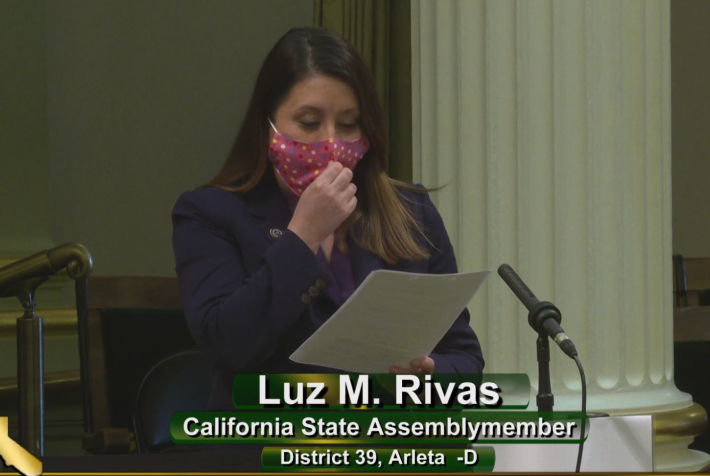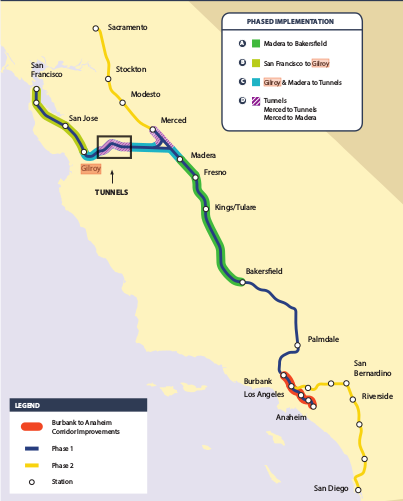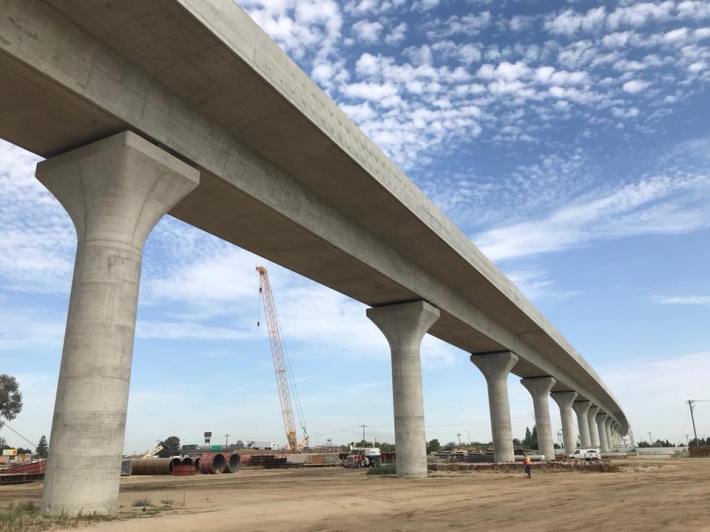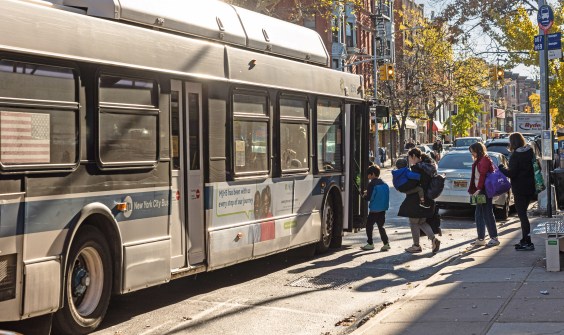SoCal Lawmakers Still Grasping at HSR Funds
4:56 PM PDT on May 5, 2020

A French high-speed train travelling at 200 mph, drawing electric power from the overhead wire. Photo: Wikimedia Commons
Note: GJEL Accident Attorneys regularly sponsors coverage on Streetsblog San Francisco and Streetsblog California. Unless noted in the story, GJEL Accident Attorneys is not consulted for the content or editorial direction of the sponsored content.
Even in the time of COVID-19, some Los Angeles politicians still really, really want to divert $4.8 billion slated for the electrification of California's High-Speed Rail Project in the Central Valley to unspecified upgrades to Metrolink, Southern California's commuter rail network.
"Before compelling this legislature to incur significant electrification costs," said Assemblywoman Luz Rivas (D-North Hollywood), during an Assembly Transportation Committee hearing yesterday on new high-speed rail legislation she authored to shift money from the Central Valley to Los Angeles, "we must consider if a portion of those funds could otherwise be redirected to increasing statewide rail ridership."

Rivas joins a group of mostly L.A.-based politicians who want to divert funds from the project to their own districts.
“We’re on the brink of a recession. California should be focusing our infrastructure investments on projects that will have the greatest economic and environmental benefit for the most Californians,” wrote Assemblymember Laura Friedman (D-Glendale), who co-sponsored the bill, in an email to Streetsblog. “Our high-speed rail project has the potential to connect millions of Californians with job centers while reducing congestion and greenhouse gas emissions, but only if we’re smart about it. A.B. 3213 simply holds the High-Speed Rail Authority to the same data-driven standards that we expect for all of our investments.”
The bill, which passed the committee unanimously with no debate, requires the California High-Speed Rail Authority (HSRA) to prioritize projects based on the following criteria:
- Providing the most overall benefit to the state;
- Increasing passenger rail ridership; and
- Replacing automobile trips with passenger rail trips.
It's unclear what this bill would do if passed. Despite Friedman's call for "data-driven standards," the criteria the bill demands are not new. The questions of how best to increase passenger rail ridership and reduce car trips have been studied and discussed, multiple times, both at legislative hearings and at the California HSR Authority board. A recent study from KPMG and Deutsche Bahn concluded that electrifying the Central Valley spine would do the most to satisfy the "specific criteria" ostensibly called for in the legislation.

In addition, the legislative analysis of the bill wrongly claims that electrification of the Central Valley spine is not desirable because it "...will require through passengers to transfer at either end to either bus service or conventional rail service." This is simply not true, at least between the Central Valley and the Bay Area, since light-weight HSR trains can run on the existing Amtrak alignment (albeit at slower speeds) thanks to new regulations from the Federal Railroad Administration. Some kind of mixed, diesel-electric, one-seat operation has not been ruled out by the HSR Authority as an interim service. "We will continue to work with our state, local and regional transportation partners to look for options to get service to the regions as soon as possible," wrote Annie Parker, a spokesperson for the CAHSRA.
Nevertheless, this falsehood about the required transfer to reach the Bay Area is continually repeated by Southern California politicians who want the Central Valley funds transferred. Streetsblog has reached out to Rivas, Friedman, Anthony Rendon (D-Lakewood) and other lawmakers to ask why. So far, the only reply that addressed this issue was from Blake Dellinger, Friedman's communications deputy. "The FRA allowance is potentially helpful for the Central Valley and other corridors," he wrote in an email to Streetsblog.
Meanwhile, planning is nearly complete on the Pacheco Pass segment that would connect Caltrain's alignment and the Central Valley segment of High-Speed Rail, allowing electrified HSR all the way from San Francisco to Bakersfield. Caltrain is already in the process of installing electrification on its tracks--which will be shared by High-Speed Rail. That project took decades of engineering and environmental studies and design to get started (Metrolink, by contrast, has made no such efforts).

Rivas also stressed that she doesn't want the billions already invested in the 171-mile Central Valley spine to go to waste. However, it's unclear what the point would be of building an all-new, grade separated, super-straight, precision, high-speed rail alignment from Merced to Bakersfield, and then failing to electrify it--which is required for trains to travel at truly high speeds (there's already a slow-speed alignment parallel to it, of course, used by Amtrak).
The legislation now moves to the Appropriations Committee.
“I don’t support diverting high-speed rail funds to other uses, important as those other uses are. We need to keep high-speed rail funding focused on getting high-speed rail done," said San Francisco State Senator Scott Wiener. "This is critical for California’s transportation, economic, and climate future.”
Stay in touch
Sign up for our free newsletter




